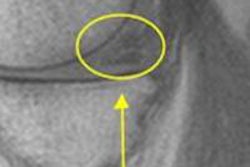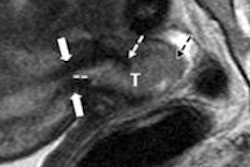Vertigo is one of the most common conditions for which patients seek medical help from ear, nose, and throat physicians. In many cases, MRI can help uncover the cause of a patient's symptoms, but some remain a puzzle, according to presenter Dr. Nagy Naguib of Goethe University Frankfurt.
As a result, the researchers thought it might be helpful to assess the volume of the membranous vestibular system using MRI in patients presenting with vertigo, Naguib said.
"We thought it [was] possible, with a resolution of 0.6-mm voxel size and software that can process such information and present them in a 3D figure that can be volumetrically assessed, [that] we might add to our understanding of the mechanism or the structural changes that might be associated with vertigo," Naguib told AuntMinnie.com.
The 3D reconstructions, which were performed on an Advantage Workstation (GE Healthcare), showed that patients presenting with vertigo had a smaller volume of the semicircular canals and vestibule, compared with patients not presenting with vestibular dysfunction or vertigo. The difference was statistically significant.
"We think that adding the third dimension to our evaluations -- and not only thinking of it as a tool to impress the clinicians -- might be helpful and might open the horizon for other studies addressing the subject of inner-ear pathology in general and the subject of vertigo in particular," Naguib said.



















